Table of Contents
- What are car safety ratings?
- Why does a car safety rating matter?
- The importance of understanding vehicle safety ratings
- Benefits of checking safety ratings before buying a car
- How to check car safety ratings
- Get a vehicle history report
- Check responsible organizations’ websites
- Go to the manufacturer’s website
- Use trusted automotive resources
- How are car safety ratings determined?
- NHTSA safety ratings and crash tests
- Frontal crash test
- Side crash test
- Rollover resistance test
- IIHS safety ratings and crash tests
- Crashworthiness
- Crash avoidance and mitigation
- Differences between IIHS and NHTSA testing protocols
- Euro NCAP safety ratings and crash tests
- Adult Occupant Protection
- Child Occupant Protection
- Vulnerable Road Users
- Safety Assist
- ANCAP safety ratings and crash tests
- What other factors to consider alongside safety ratings?
What are car safety ratings and how to check them
Everyone has different preferences when shopping for a car, from color to engine power. Safety, however, should be the top priority.
Understanding car safety ratings can help you determine the vehicle’s structural integrity and performance in real-life situations, potentially saving you from serious injuries or even fatalities. How do they work, and how do you check the safety score of a car you’re about to buy?
Let’s find out.
What are car safety ratings?
A car safety rating is an evaluation of how well a vehicle can protect its occupants in emergency situations or help avoid them. It’s determined by a series of internationally recognized automotive crash tests and safety assessments performed by government agencies and independent organizations worldwide.
Depending on the region, car safety ratings can be provided by:
- National Highway Traffic Safety Administration (NHTSA) and the Insurance Institute for Highway Safety (IIHS) in the United States.
- European New Car Assessment Programme (Euro NCAP).
- Australasian New Car Assessment Program (ANCAP), and other regional or national agencies.
You can use car safety ratings to assess the overall safety of the car you want to buy or to see how it performs in certain situations, such as head-on collisions or rollovers.
Why does a car safety rating matter?
A higher safety rating means that a car is designed with safety features that tend to protect its occupants better. Put simply, the higher the rating, the lower the likelihood and severity of injuries in the event of an accident.
Naturally, this can make your trips more peaceful, as you can shift focus to enjoying your drive instead of doubting the safety of your car.
The importance of understanding vehicle safety ratings
Safety rating scores result from vigorous tests that simulate different real-world scenarios on the road. Therefore, if you understand the types of tests conducted and their implications for overall car safety, analyzing these results can help you make a better decision when buying a car.
For instance, frontal crash tests typically simulate head-on collisions. Their results indicate how well the vehicle’s structure absorbs and distributes crash forces and the effectiveness of the seat belts and airbags in protecting car occupants. Therefore, the vehicle’s score in a frontal crash test can help assess the likelihood of a severe injury (that requires hospitalization), allowing you to determine whether it’s a good choice.
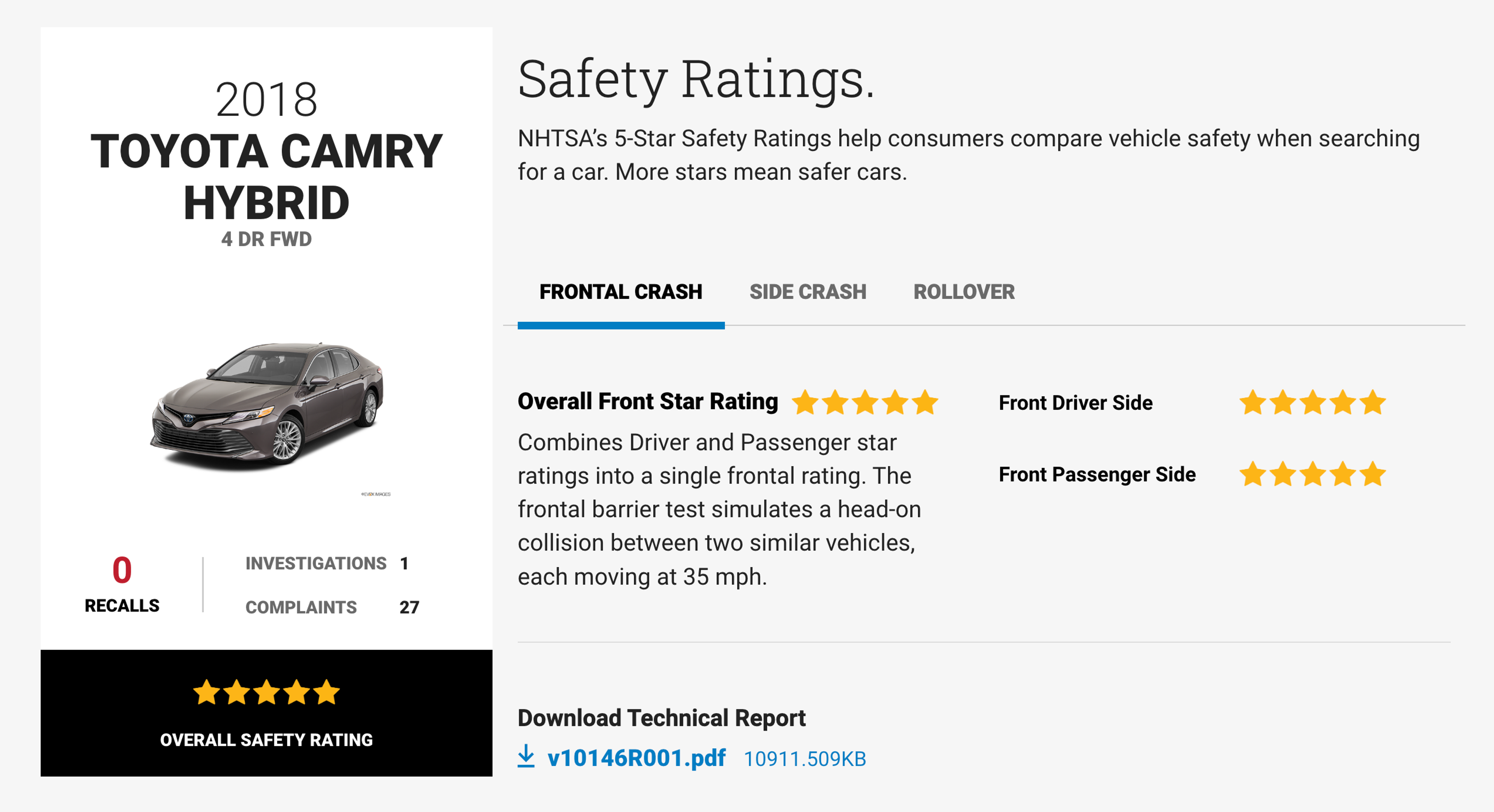
Note: Car safety assessment programs typically have different rating systems adjusted to the safety requirements in specific regions. For example, the same car in the US and Europe can have different airbag systems because of different safety standards, which can affect its safety score.
Therefore, make sure to check vehicle safety scores that are relevant to your region.
Benefits of checking safety ratings before buying a car
If you’re looking for a car, knowing the vehicle’s safety rating beforehand can bring you several benefits:
- More informed decisions. Crash test results provide objective assessments of vehicle safety performance across different models and manufacturers, empowering consumers to make better decisions when purchasing a vehicle.
- Reduced risk of injuries. In the event of a crash, vehicles with higher safety ratings generally offer better protection for their occupants. Choosing such a car can help drivers and passengers reduce the risk of injuries and even deaths in collisions.
- Reduced insurance costs. Some insurance companies offer discounts for vehicles with high safety ratings. Therefore, a safer car can contribute to your savings, as you may be eligible for lower insurance premiums.
- Resale value. Vehicles with high safety ratings often retain their value better than those with lower ratings. If you decide to sell or trade in the vehicle in the future, a higher safety rating can attract more buyers, positively affecting the resale price.
How to check car safety ratings
You can check car safety ratings using several methods, and they’re all too easy to ignore when buying a vehicle.
Get a vehicle history report
It’s a good idea to get a vehicle history report before shaking hands with the seller, and not only because it can help you quickly check the safety of the car you’re eyeing.
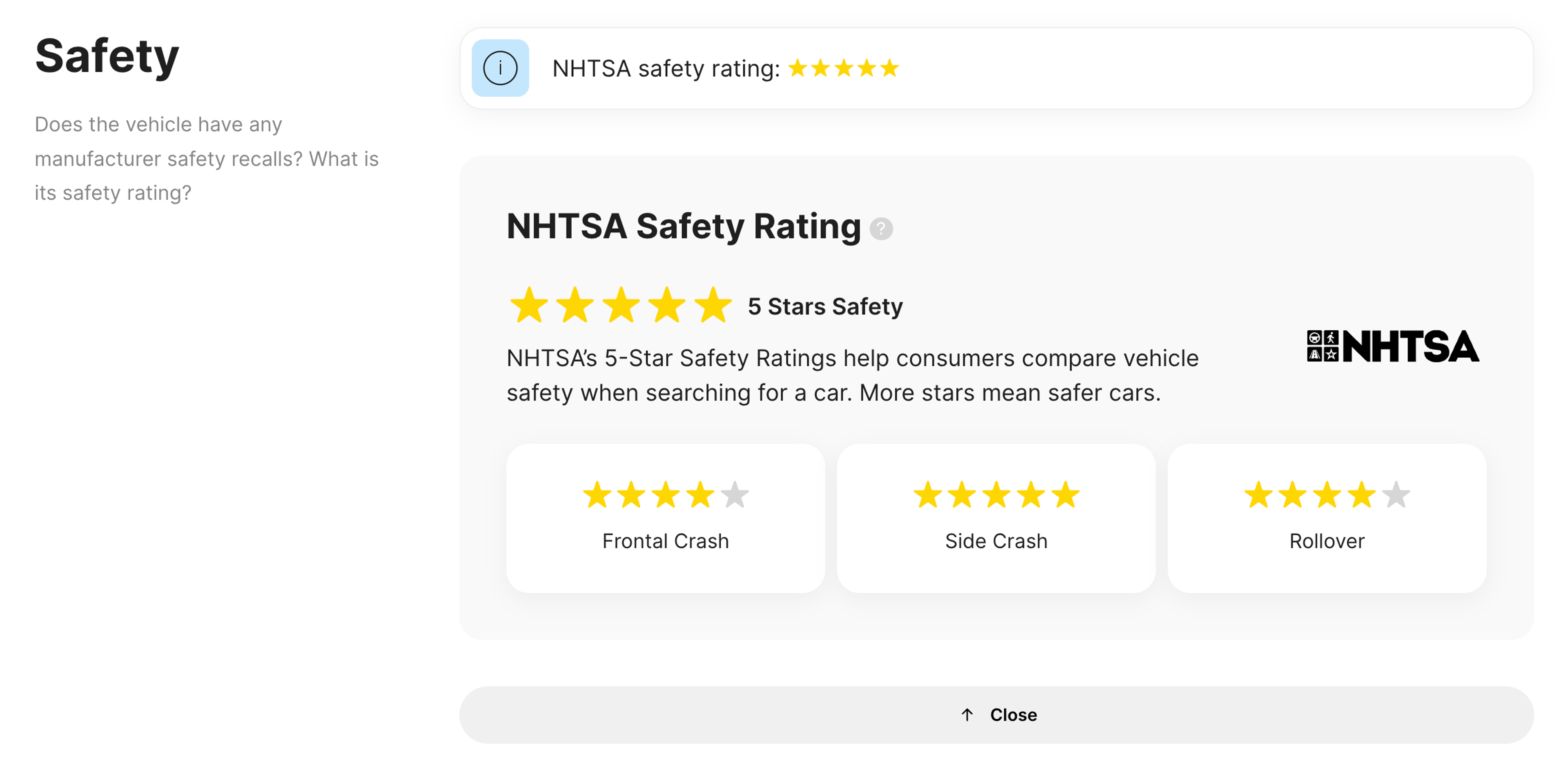
Vehicle history reports also include other information about a car and its past that is not always obvious but crucial to know, such as damage and mileage records, financial information, title checks, historical photos, and more.
If vehicle safety information is available, the report will show you an overall car safety score depending on your location, what it means, and the results for specific tested areas (e.g., frontal crash, side crash, and rollover).

Afraid of buying a wreck?
Check any VIN to learn a vehicle's history!
Check responsible organizations’ websites
Another way to check a car's safety rating is to visit the NHTSA, IIHS, Euro NCAP, or ANCAP websites (depending on your region). These websites provide comprehensive information on vehicle safety ratings.
Typically, to see a safety rating of a specific vehicle, you will need to provide its make, model year, or other similar information. Some of these organizations also allow you to simply browse all available vehicles by filtering them by different aspects.
Note that you may not find safety scores for rarer models since it’s not possible to crash-test all existing cars.
Go to the manufacturer’s website
Sometimes, vehicle manufacturers provide safety ratings on their official websites. They are usually listed under the vehicle’s specifications or safety features section.
Use trusted automotive resources
Automotive websites like Consumer Reports, Edmunds, and J.D. Power often review various vehicles and report on their safety ratings
For example, J.D. Power provides reviews for new and used vehicles, including passenger cars, trucks, SUVs, and luxury vehicles. Therefore, you can access detailed information about vehicle features, specifications, pricing, and safety performance, which can help make a better purchase decision.
How are car safety ratings determined?
In the US, car safety ratings are determined by two organizations:
- National Highway Traffic Safety Administration, widely known as NHTSA. It’s a federal agency within the Department of Transportation focused on transportation safety in the United States.
- Insurance Institute for Highway Safety (IIHS), which is a non-profit organization funded by insurance companies dedicated to reducing deaths, injuries, and property damage from motor vehicle crashes.
Although they both focus on improving automotive safety, they have different roles and functions. While NHTSA is responsible for establishing and enforcing safety standards, IIHS is focused on research, testing, and advocacy related to vehicle safety.
NHTSA safety ratings and crash tests
The NHTSA uses the 5-Star Safety Ratings system to provide consumers with information about the crash protection and rollover safety of new vehicles.
The Overall Vehicle Score (the number of stars from 1 to 5) considers the chances of getting hurt in certain accidents:
- 5 stars: Overall injury risk for this vehicle is much less than average.
- 4 stars: Overall injury risk for this vehicle is less than average to average.
- 3 stars: Overall injury risk for this vehicle is average to greater than average.
- 2 stars: Overall injury risk for this vehicle is greater than average.
- 1 star: Overall injury risk for this vehicle is much greater than average.
To calculate the vehicle safety score, the agency conducts frontal, side, and rollover resistance tests, which account for the majority of crashes on America’s roads.
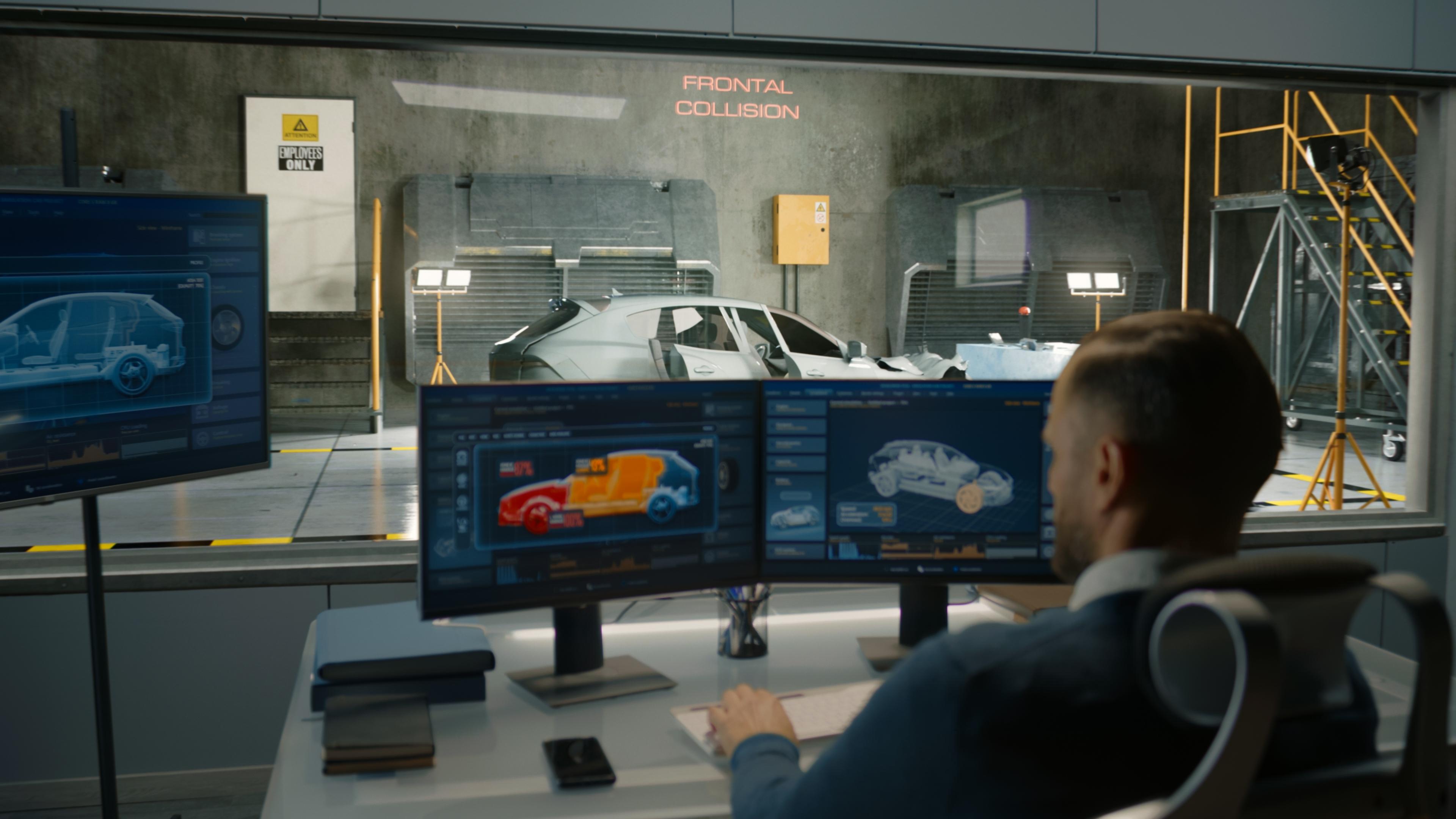
Frontal crash test
A front crash test simulates a head-on collision. It involves two vehicles of similar weight and two crash-test dummies – an average-size adult male in the driver’s seat and a small-size adult female in the front passenger’s seat, both wearing seatbelts.
During the test, a vehicle crashes into a fixed barrier at 35 mph. The test is performed to evaluate head, neck, chest, and femur (leg) injuries.
Side crash test
The side crash test consists of two scenarios:
- A side barrier crash test simulates a situation in which a car is hit by another vehicle on the driver’s side (e.g., failing to stop at a four-way intersection).
- A side pole crash test simulates what happens when a driver slides off the road and crashes into a static object.
During the side barrier crash test, a 3,015 lb moving barrier crashes at 38.5 mph into a standing vehicle that contains two dummies (both on the driver’s side) secured with a seatbelt. The test evaluates head, chest, abdomen, and pelvis injuries.
Meanwhile, during the side pole crash test, a vehicle with a small-size adult female in the driver’s seat is pulled sideways at 20 mph and a 75-degree angle into a 9.5-inch diameter pole, hitting the car at the driver’s side. The test results evaluate injuries to the head, chest, lower spine, abdomen, and pelvis.
Rollover resistance test
Vehicle rollover resistance testing is based on an at-rest laboratory measurement known as the Static Stability Factor (SSF). It determines the susceptibility to rolling over during the high-speed maneuver after the driver loses control of the vehicle.
IIHS safety ratings and crash tests
IIHS evaluates two aspects of safety: crashworthiness and crash avoidance mitigation. Overall results are represented using a color code and four letters: G (Good), A (Acceptable), M (Marginal), and P (Poor).
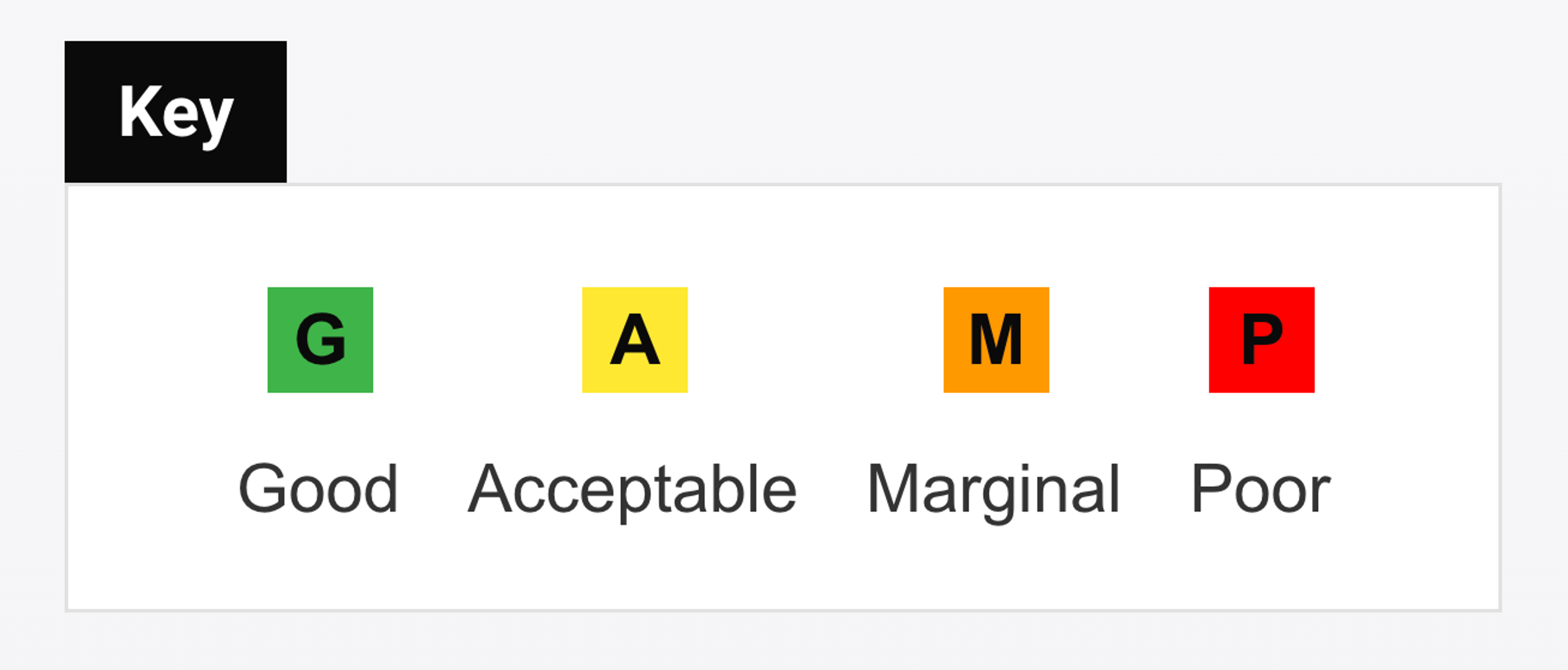
Crashworthiness
Currently, IIHS maintains ratings in 3 crashworthiness evaluations:
- Moderate overlap front, where 40% of the total width of the vehicle traveling at 40 mph strikes the barrier on the driver’s side.
- Small overlap front that evaluates how the impact affects car occupants on the driver and passenger’s sides.
- Side tests that help evaluate how well vehicles cope with more severe side crashes.
Since IIHS used to rate vehicles for roof strength and head restraints (both discontinued in 2022), you can still find these ratings when checking some older models on the IIHS website.
Crash avoidance and mitigation
As for crash avoidance and mitigation, IIHS performs tests in several other areas:
- Headlight evaluation. IIHS measures the reach of a vehicle’s headlights as the car travels straight and on curves.
- Front crash prevention. IIHS evaluates how well car safety technologies help to avoid hitting the target or lessen the severity of the impact.
- Seat belt reminder. IIHS tests various aspects of seat belt reminders, such as reminder timing, audible signal (sound level, pitch, duration), and visual indicator location. To receive a good rating, vehicles must meet all the requirements for both the front and second-row reminders.
- LATCH evaluation that involves Lower Anchors and Tethers for Children system check.
Differences between IIHS and NHTSA testing protocols
The key differences between NHTSA and IIHS overall ratings are their testing focus and the type of tests they perform.
NHTSA primarily conducts crash tests to assess vehicle safety performance according to federal safety standards. The organization focuses on evaluating how vehicles perform in standardized crash scenarios and ensures that they meet minimum safety requirements set by federal regulations.
IIHS, on the other hand, conducts a wide range of specialized IIHS crash tests and evaluations to assess vehicle safety performance in various real-world scenarios. The organization aims to identify areas where vehicles can improve safety beyond meeting minimum regulatory requirements.
Euro NCAP safety ratings and crash tests
Euro NCAP, or the European New Car Assessment Programme, is responsible for determining car safety ratings in Europe. Like its American counterparts, Euro NCAP performs crash tests and provides information regarding the safety of passenger vehicles.
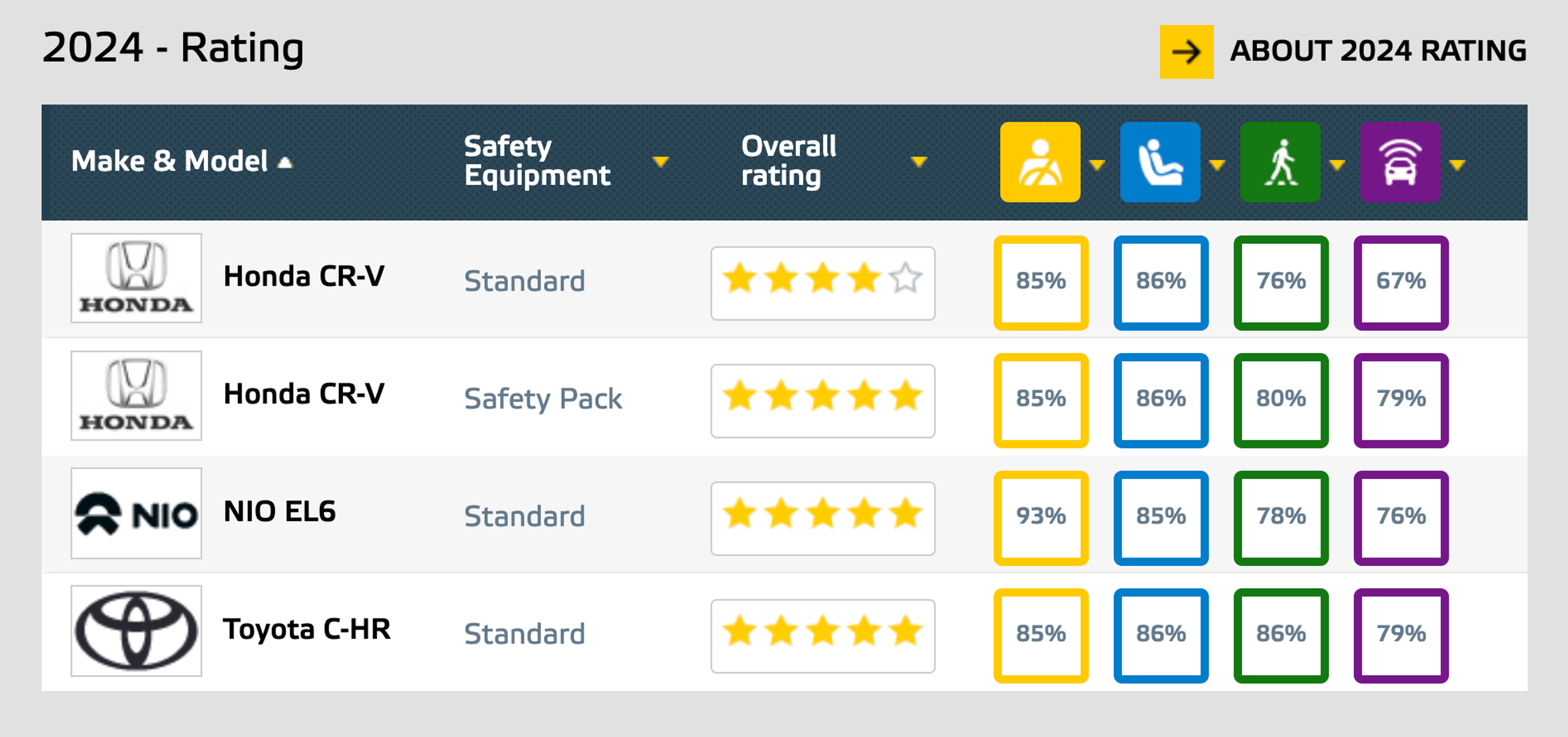
Euro NCAP ratings use a five-star system (0 to 5), which provides insights into the safety performance of a car:
- 5-star safety: Overall excellent performance in crash protection and well equipped with comprehensive and robust crash avoidance technology.
- 4-star safety: Overall good performance in crash protection and all round; additional crash avoidance technology may be present.
- 3-star safety: At least average occupant protection but not always equipped with the latest crash avoidance features.
- 2-star safety: Nominal crash protection but lacking crash avoidance technology.
- 1-star safety: Marginal crash protection and little in the way of crash avoidance technology.
- 0-star safety: Meeting type-approval standards so can legally be sold but lacking critical modern safety technology.
Euro NCAP calculates the overall safety score by assessing 3 areas: Adult Occupant Protection, Child Occupant Protection, Vulnerable Road Users, and Safety Assist.
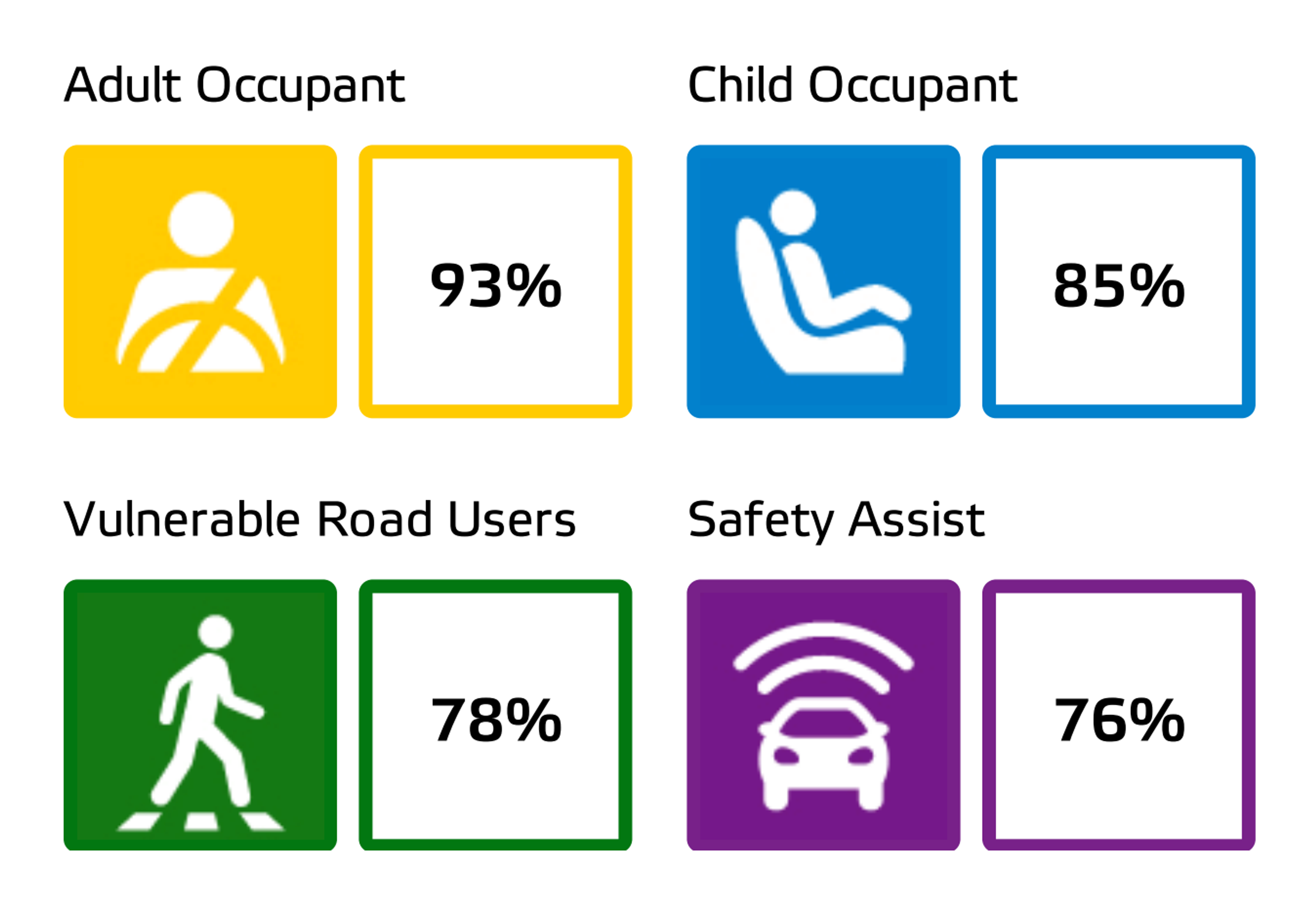
Adult Occupant Protection
The Adult Occupant Protection score is calculated based on frontal impact, lateral impact, and whiplash test results. These tests evaluate how well a car protects the driver and passengers and whether it allows prompt and safe rescue and extrication.
Child Occupant Protection
Euro NCAP evaluates child occupant protection for different age groups using specialized test dummies representing infants and children. These dummies are positioned in appropriate child restraint systems (CRS) corresponding to their age and size, such as rear-facing infant seats, forward-facing child seats, and booster seats.
The organization then conducts various crash tests, including frontal, side, and whiplash tests, as well as evaluations of CRS installation and compatibility.
Vulnerable Road Users
Besides assessing how well vehicles protect their occupants, Euro NCAP tests how they can affect vulnerable road users (VRU), such as pedestrians and cyclists.
Test scenarios include impacts with the front of the vehicle, such as the hood, windshield, and A-pillars, which are common areas of contact in pedestrian accidents.
Evaluation criteria consider factors such as the design of the front end of the vehicle, the presence of energy-absorbing structures, and the likelihood of head and leg injuries to VRU.
Safety Assist
Safety assist features are technologies designed to prevent or mitigate collisions and enhance overall vehicle safety. These systems use sensors, cameras, and radars to monitor the vehicle’s surroundings, detect potential hazards, and assist the driver.
When evaluating these features, Euro NCAP tests system functionality and performance during normal driving and in typical accident situations.
ANCAP safety ratings and crash tests
The Australasian New Car Assessment Program’s ratings (ANCAP) are largely aligned with the organization’s European counterpart, Euro NCAP. Therefore, the overall score is also determined from crash tests and safety assessments of on-board safety features.
In some cases, ANCAP may adapt certain aspects to better suit the Australian and New Zealand markets.

Check your VIN
Avoid costly problems by checking a vehicle's history. Get a report instantly!
What other factors to consider alongside safety ratings?
While safety ratings are an essential consideration when buying a car, several other factors should be taken into account to ensure that the vehicle is up to standards:
- Safety recalls and defects. Knowing about car recalls is crucial for safety, yet used car buyers and owners aren’t always aware of them. Since manufacturers mainly send recall notices only once (to the current owner), you may not even know that a car you own or are about to buy is dangerous to drive.
- Advanced safety technologies. In addition to standard safety features, modern vehicles often offer advanced safety technologies to help prevent or mitigate collisions. Check them before buying a car to make sure they meet your needs.
- Differences between organizations. Depending on your location, you can explore safety ratings from different car assessment programs. Learn how they differ (e.g., NHTSA vs. Euro NCAP) so that you can choose a vehicle that complies with safety standards in your region.
- Monroney label. Also known as the window sticker, the Monroney label, which is affixed to new cars in the US, sometimes includes information about safety ratings and advanced features alongside other important information.
Ultimately, analyzing all available information is critical for choosing a vehicle that you can trust. By staying informed, car owners and potential buyers can help reduce the risk of injury and save lives on the road.
FAQ
What is a safety rating for a car?
A car safety rating is an assessment of how well a vehicle protects its occupants in the event of a crash. This score is determined by independent organizations or government agencies that conduct various crash tests and safety evaluations.
What do car ratings mean?
Car ratings mean that a vehicle has undergone vigorous crash testing and is either safe or dangerous to drive (depending on the result).
How is the safety rating calculated?
Safety ratings are calculated based on rigorous testing and evaluation of a vehicle's crashworthiness, occupant protection, and safety features. The specific methodology for calculating safety ratings may vary depending on the organization conducting the evaluations.
What is a 5-star safety rating?
A 5-star safety rating is the highest safety rating awarded to a vehicle by a particular organization or government agency based on its performance in crash tests and safety evaluations.